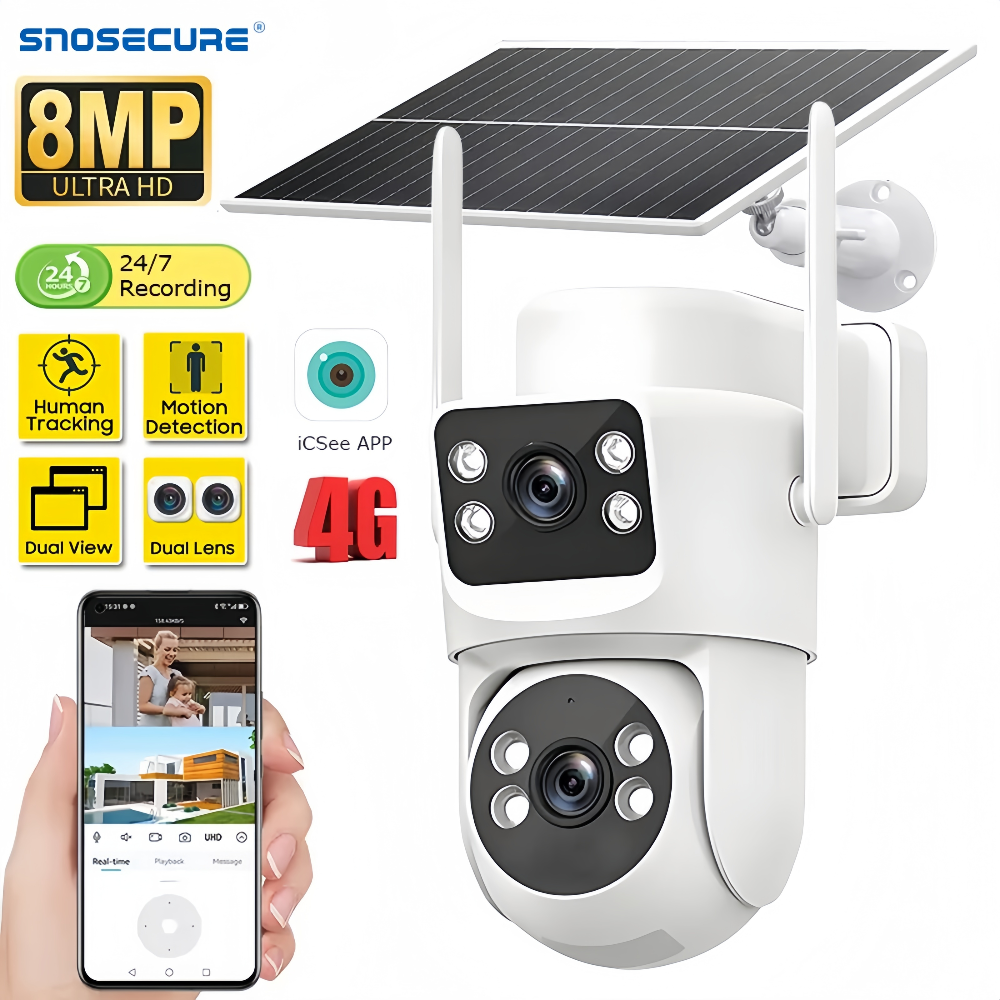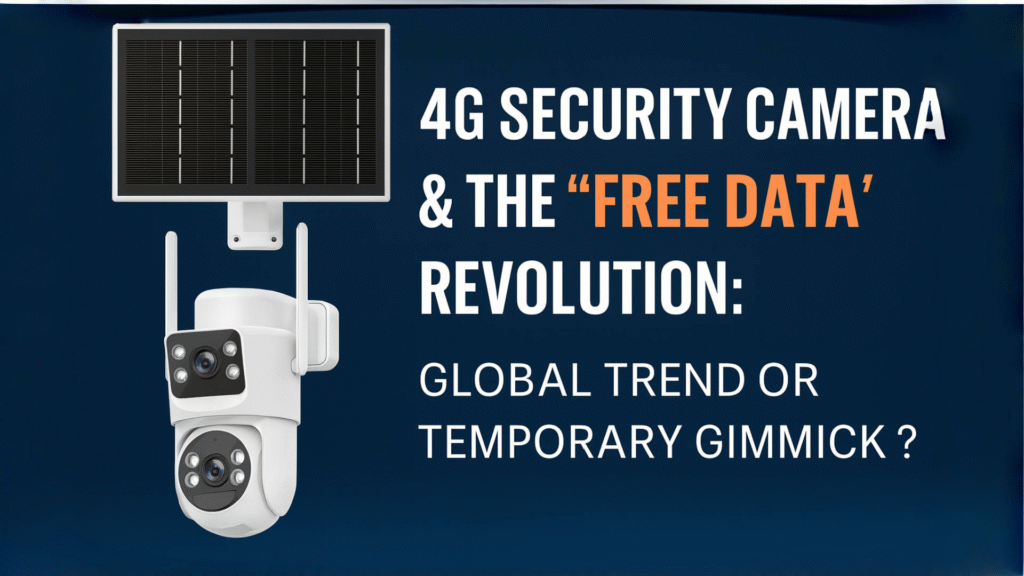Table of Contents
ToggleIntro: The Market Is Boiling, But What’s Beneath the Surface?
In 2025, the 4G surveillance market isn’t just growing—it’s evolving. From China to Europe, manufacturers are rolling out 4G security cameras bundled with “lifetime free data.” It sounds bold. It sounds disruptive. But is it sustainable? Is it even scalable across borders?
If you’re a distributor, importer, or system integrator watching this trend unfold, here’s what you need to know before jumping in.
What’s Driving This Trend?
- In China, 4G camera penetration in online channels reached 13.5% in 2024, up 1.9% YoY (source: RUNTO).
- Lower data costs, mature SIM technologies, and demand for “wireless-ready” deployment are fueling adoption.
- Free data is no longer an upgrade. It’s being positioned as standard—a dangerous race to the bottom.
Domestic giants like Hikvision, TP-Link, SNOSECURE and Ezviz are leading the charge. Product categories in focus include:
- 4G Bullet Cameras
- Solar-Powered PTZ Cameras
- Indoor 4G Baby Monitors
- Low-Power Smart Cameras
Overseas Markets: Still Green but Growing
Some Chinese brands are testing “free data” in regions like:
- Southeast Asia (Indonesia, Vietnam, Thailand)
- Europe (35 countries) via roaming-supported virtual SIMs (vSIM)
These models come preloaded with vSIM cards offering automatic carrier switching, ideal for:
- Project deployments
- E-commerce bundles
- Overseas warehouses
Use Case Snapshot
A Southeast Asian logistics partner adopted 4G PT cameras bundled with prepaid vSIMs. Initial installation took 50% less time vs. Wi-Fi-based units, with network uptime exceeding 96%.
3. The Real Cost of “Free” Data
There are only two ways to fund this model:
- Markup hardware: Bake 3–10 years of data cost into device pricing.
- Monetize the SIM channel: Earn rebates from carrier deals via volume.
Pricing Impact Table:
| Device Type | Base Price | Free Data Version Price | Data Value (Est.) |
|---|---|---|---|
| 4G Solar PTZ | $72 | $96 | ~$40 over 5 yrs |
| 4G Mini Cam | $39 | $56 | ~$25 over 3 yrs |
If you’re a buyer, ask: What happens if the network shuts off? Who owns the SIM? What’s the backup?
The Compliance & Technical Risks
Free data often rides on roaming or cloud SIM solutions. But:
- Some countries prohibit long-term roaming devices (e.g., Brazil, Turkey)
- Local laws require traffic to remain in-country
- eSIM / vSIM lack global standardization
- vSIM reliability varies by chipset, firmware, and carrier support
4G SIM Tech Options — A Quick Guide
| Type | Pros | Risks |
| Roaming Card | Quick to deploy, cross-border use | Low priority; often blocked after 3–6 months |
| Local SIM | Best performance, legal stability | High negotiation cost per country |
| eSIM | OTA provisioning, sleek design | Limited support, fragmented standards |
| vSIM | Scalable, central management | Regulatory grey zone, carrier risk |
Conclusion: Trend or Trap?
The idea of “lifetime free data” sells well. But in the long run, markets reward those who:
- Master device quality
- Solve real deployment problems
- Follow legal & network compliance
If you’re planning to scale 4G camera sales globally, focus on:
- Reliable SIM partnerships
- Device modularity & flexibility
- Clear data ownership models
Otherwise, you may win the first order, but lose long-term trust.



